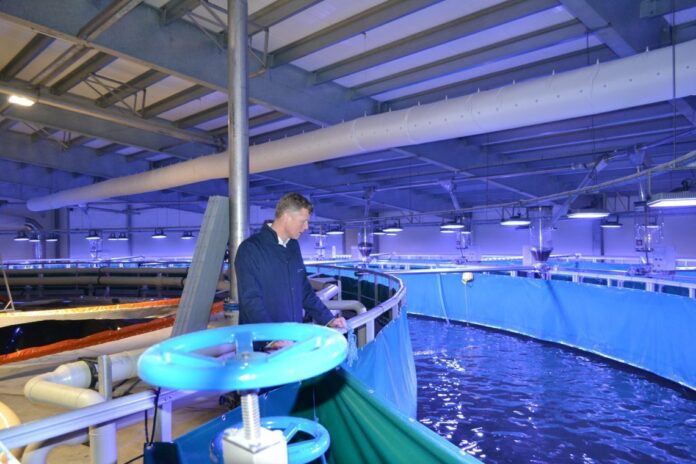Fredrikstad Seafood is switching to yellowtail production instead of salmon.
In large tanks in an industrial area outside Fredrikstad, sits Norway’s only commercial land-based salmon farm. But maybe not for long.
According to business newspaper DN, Fredrikstad Seafood has now applied for permission to produce yellowtail, a type of tuna species that is popular in sushi.
Read more: Gråkjær must turn over €7 million to Fredrikstad Seafoods
“We believe there is greater earning potential for this species that we already produce in Hanstholm in Denmark,” explained Bernt Olav Røttingsnes. He is CEO of Nordic Aquafarms, the company that owns both Fredrikstad Seafood and Danish Sashimi Royal.
The plant in Fredrikstad cost around €40 million. It was completed in 2019, and harvested its first salmon at the end of 2020. This is the first commercial salmon farm on land in Norway, and the first to be based on RAS. So far, it is also the only thing with salmon in tanks but owner Salmon Evolution is only weeks away from its first release.
The Nordic Aquafarms manager says that salmon production in Fredrikstad is not profitable today, but that it will be during the year when the volume rises.
High kilo price
Danish Sashimi Royal already produces yellowtail on land, and will soon expand capacity.
“We will build a plant to produce the fish from 10 grams for slaughter in Hanstholm, against current production where the small fish are produced in a plant by the Limfjord. This will increase production to around 1,000 tonnes a year. The next step will be to expand to 3,000 tonnes, but we have land for double that again, says Røttingsnes.
In Fredrikstad, production will also increase if it switches from salmon to yellowtail kingfish.
The selling price of the new species is around NOK 150 (€15) per kilo, close to double the salmon price.
Røttingsnes said that they are working to get approval to produce the fish in Norway during the year, and that production can start in 2023.
Preliminary feedback from the Norwegian Environment Agency is positive. In addition, it must be approved by the Directorate of Fisheries and the county municipality.

